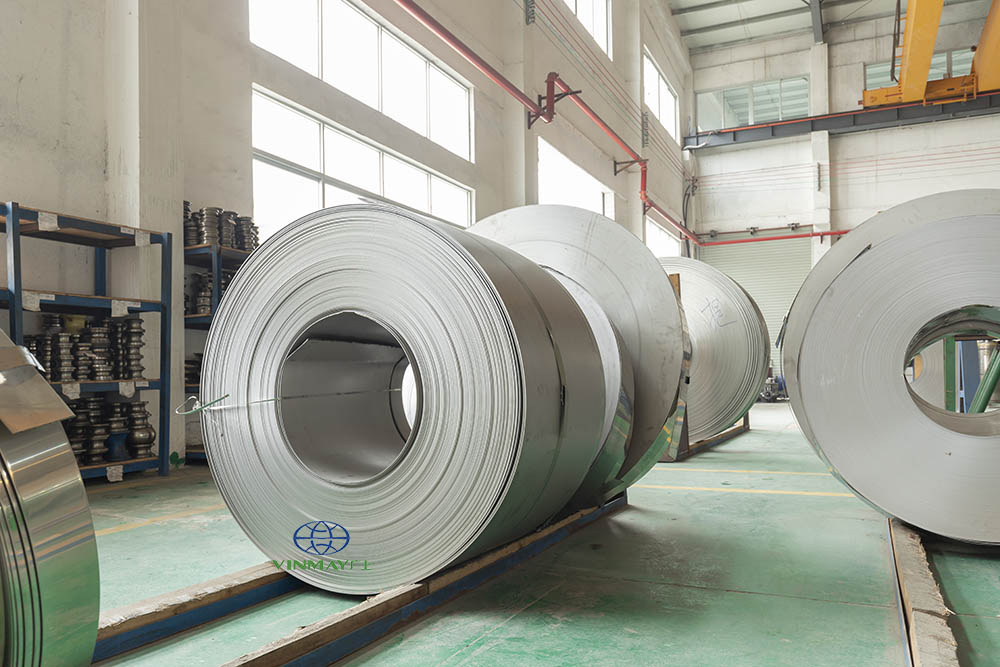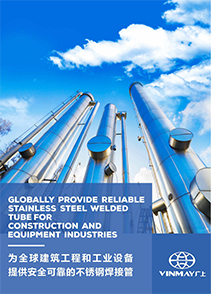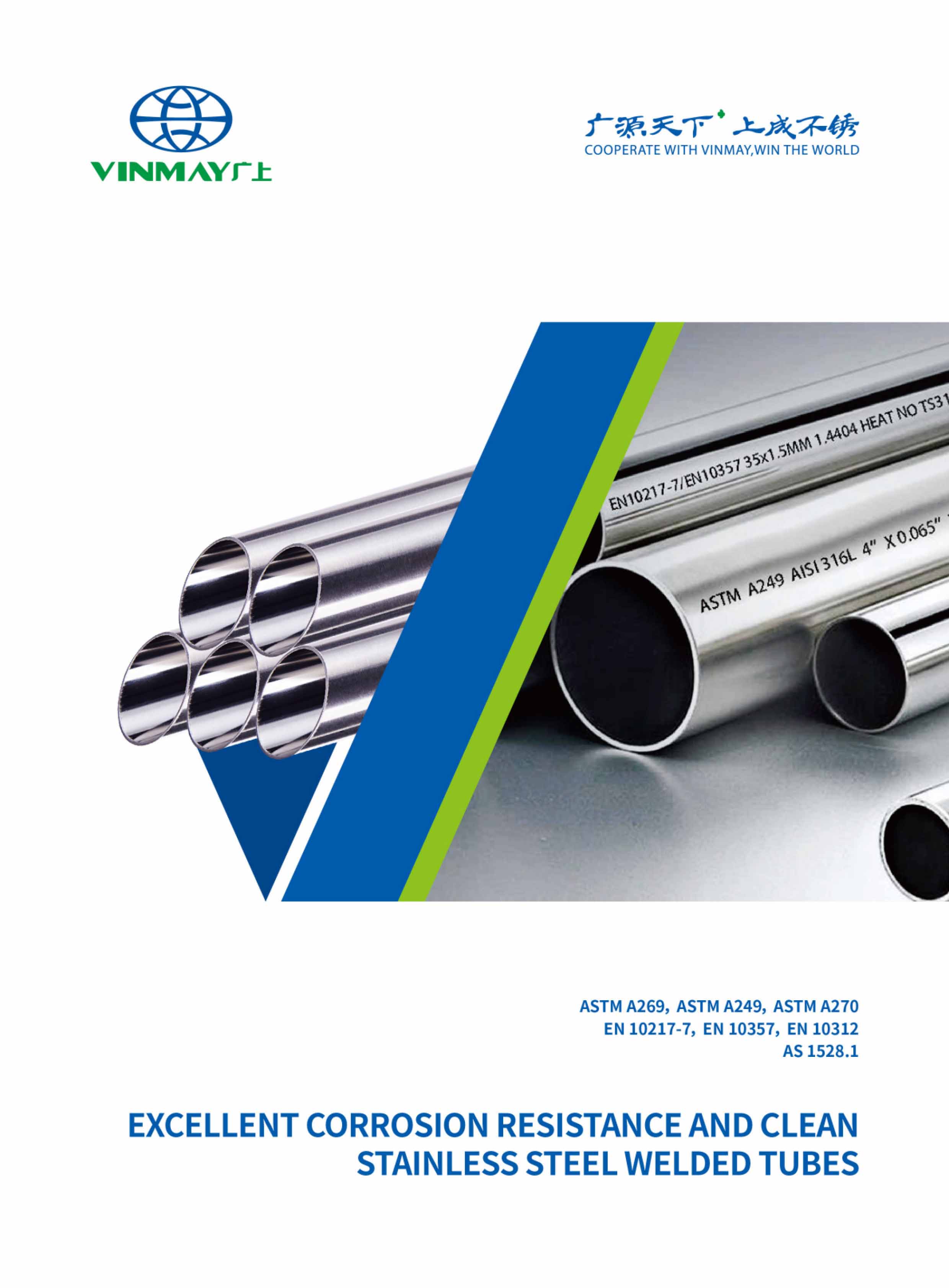Stainless Steel 201 has earned recognition as a cost-efficient alternative in the austenitic stainless steel family, offering a balance between performance and economy. Its development during a period of nickel scarcity led to innovative adjustments in its composition, resulting in commendable corrosion resistance and formability akin to higher-grade counterparts.
The distinct metallurgical properties of Stainless Steel 201 make it a compelling choice for various applications, but a deeper exploration into its characteristics and limitations could reveal its true potential in the realm of stainless steel tube materials engineering and stainless steel pipe manufacturing.

Stainless steel 201 is characterized by a chemical composition that includes 16.0-18.0% chromium, 3.5-5.5% nickel, and 5.50-7.50% manganese, offering a balance of corrosion resistance and formability.
Its mechanical properties feature a yield strength of 100 ksi and a maximum hardness of 100 Rb, making it suitable for various applications.
Additionally, Grade 201 adheres to typical standards such as ASTM A554, ensuring its quality and reliability in processing and forming.
In stainless steel 201, the chemical composition includes 0.15% carbon, 16.0-18.0% chromium, 3.5-5.5% nickel, 5.50-7.50% manganese, and 1.00% silicon.
These elements contribute to the material characteristics of stainless steel 201, impacting its chemical properties such as corrosion resistance and formability.
The presence of chromium enhances the surface finish of the metal, providing it with a shiny appearance.
Due to its composition, stainless steel 201 is commonly used in various industrial applications where cost-effectiveness is a priority.
Stainless steel 201 exhibits specific mechanical properties that play a crucial role in determining its performance and suitability for various industrial applications.
Yield Strength: Grade 201 stainless steel offers a yield strength of 100 ksi, providing good structural integrity.
: To enhance its properties, Type 201 stainless steel needs to be annealed at 1,850-2,000°F and rapidly cooled to avoid sensitization.
Cold Working: This grade of stainless steel pipe can be hardened through cold working, making it suitable for applications requiring increased toughness and strength.
These properties make Grade 201 stainless steel a viable option in scenarios where cost-effectiveness and specific mechanical characteristics are crucial.
The physical properties of stainless steel 201 are integral to understanding its characteristics and applications in various industries. This grade exhibits non-magnetic behavior in its annealed form, making it suitable for specific applications where magnetism is undesired. When considering its thermal properties, stainless steel 201 has a coefficient of thermal expansion of 9.2 x 10^-6 ˚F, a thermal conductivity of 9.4 Btu/ft hr ˚F, and a specific heat of 0.12 Btu/lb ˚F. Moreover, its surface finish tends to be darker compared to other stainless steel grades, which makes it a popular choice for decorative applications. Additionally, its environmental impact is worth noting, as it requires careful consideration in polluted areas due to its lower corrosion resistance compared to other grades.
| Property | Value |
|---|---|
| Surface Finish | Darker |
| Thermal Properties | High conductivity |
| Magnetic Behavior | Non-magnetic |
Physical properties play a crucial role in understanding the characteristics of Grade stainless steel 201, particularly when considering its compliance with standards in the industry.
Industry Certifications: Certification ensures that the stainless steel meets specific industry standards and regulations.
Quality Control: Strict quality control measures are essential to maintain the integrity and performance of stainless steel 201.
Read More:
Unlocking the Strength of Stainless Steel: A Guide to Stainless Steel Tube Standards
In the realm of stainless steel materials, Grade 201 stands as a distinctive alloy known for its unique composition and properties. When it comes to processing and forming Type 201 stainless steel, it cannot be hardened through heat treatment but can be strengthened via cold working methods.
Annealing at temperatures between 1,850-2,000°F followed by rapid cooling is essential to prevent sensitization. While it can be welded using standard techniques, caution is advised due to its sensitivity to high carbon content.
Understanding the material properties of Type 201 is crucial for selecting appropriate processing techniques, forming methods, and surface finishes. Considerations regarding heat treatment play a significant role in achieving the desired mechanical characteristics for specific applications.
Grade 201 stainless steel, known for its unique composition and properties, is a distinctive alloy frequently utilized in various welding applications. When working with Grade 201 stainless steel, several key factors need consideration:
Heat Treatment: Heat treatment plays a vital role in the welding process of Grade 201 stainless steel, as it cannot be hardened by heat treatment but can be through cold working.
The annealing process is also significant for Grade 201 stainless steel to maintain its desired properties during welding procedures.

Stainless Steel Type 201 offers significant benefits in terms of corrosion resistance and versatility. Its composition, with lower nickel content than traditional stainless steels, provides a cost-effective solution without compromising on essential properties.
Type 201 is a practical choice for various applications where these specific advantages are paramount.
With its comparable corrosion resistance to higher-grade austenitic stainless steels like T301 and T304, Stainless Steel Type 201 offers a cost-effective solution for various applications. When considering corrosion resistance, specific factors come into play:
Corrosion resistance comparison: Type 201 exhibits satisfactory resistance to corrosion, although not as superior as T301 and T304.
Surface finish: The surface finish of Stainless Steel Type 201 may require additional care to maintain its appearance due to its slightly lower corrosion resistance.
Welding techniques: Welding Stainless Steel Type 201 requires attention to detail to prevent sensitization and maintain its corrosion resistance over time.
Discover More:
will 201 stainless steel rust?
Unveiling the Versatility of 201 2B Stainless Steel
Type 201 Stainless Steel's versatility extends beyond its cost-effective solution for various applications, showcasing specific mechanical properties that cater to diverse industrial needs.
The benefits of its versatility include durability features that make it suitable for demanding industrial environments. Stainless Steel 201 offers a wide range of design options due to its formability and workability, allowing for intricate and customized shapes. Its adaptability to various industrial applications, such as decorative and industrial pipes, showcases its practicality in different settings.
Additionally, the aesthetic appeal of Stainless Steel 201 makes it a popular choice for projects requiring both functionality and visual appeal. Its versatility in meeting specific requirements across different industries solidifies its position as a valuable material for various applications.
Commonly utilized in industries requiring cost-effective solutions with specific mechanical properties, Stainless Steel 201 finds its application in various manufacturing and construction projects. Its versatility allows for a range of uses, including:
appliances
restaurant equipment
cooking utensils
sinks
automotive trim
windows and doors
railway cars
trailers
hose clamps
When comparing Stainless Steel 304 and 201, key differences lie in their chemical element content, fabrication, corrosion resistance, and cost. Stainless Steel 304 contains higher nickel and chromium levels than Stainless Steel 201, resulting in superior corrosion resistance and toughness.
While Stainless Steel 304 is pricier due to its composition, Stainless Steel 201 provides a more cost-effective alternative with different characteristics in terms of formability and application.
The chemical composition differences between stainless steel types 304 and 201 primarily lie in their respective chromium and nickel content levels.
201 Stainless Steel: 16.0-18.0% Chromium, 3.5-5.5% Nickel
304 Stainless Steel: 18.0% Chromium, 8-10.5% Nickel
Material Comparison
201 Stainless Steel: Lower Nickel Content, Lower Cost
304 Stainless Steel: Higher Nickel Content, Higher Cost
Heat Treatment Effects
201 Stainless Steel: Cannot be hardened by heat treatment
304 Stainless Steel: Can be hardened by heat treatment
Read More:
The Life Expectancy of 304 Stainless Steel
The Reality of 304 Stainless Steel Surgical Grade: Pros, Cons, and Critical Considerations
These differences affect the overall properties of the stainless steels, impacting their suitability for various applications based on factors like cost, corrosion resistance, and mechanical properties.
The comparison between Stainless Steel Type 304 and Type 201 in terms of stainless steel tube fabrication and application aspects reveals distinct differences in their mechanical properties and corrosion resistance, crucial factors influencing their suitability for specific industrial uses.
Fabrication techniques for Type 304 are more straightforward due to its higher nickel content, allowing for easier welding and forming processes compared to Type 201. Type 304 is commonly used in industrial applications requiring excellent corrosion resistance, such as construction and food industries, while Type 201, with lower corrosion resistance, is suitable for applications like decorative and industrial pipes.
Surface finishes on Type 304 are smoother and more polished, enhancing its aesthetic appeal. Maintenance tips include regular cleaning for both types, especially Type 201, in polluted environments, considering their environmental impact.

Comparatively, the cost difference between 201 and 304 stainless steel is influenced by their differing compositions and properties, particularly in terms of nickel and chromium content. Stainless steel 304 contains higher nickel and chromium levels compared to 201, leading to a higher price due to these alloying elements.
The cost comparison between these grades is crucial in market analysis and price differentiation strategies. While 304 is known for its superior durability and corrosion resistance, the lower cost of 201 makes it a viable option for applications where performance evaluation leans more towards affordability.
Understanding the cost implications of these stainless steel types allows for a more informed decision-making process in materials selection and overall project budgeting.
In outdoor environments with high pollution levels, the suitability of stainless steel type 201 is limited due to its lower corrosion resistance compared to other stainless steel types. While it offers cost advantages, its welding techniques may be sensitive to high carbon content, affecting its durability.
Appearance differences, such as darker surface color, may be noticeable. It is essential to consider these factors along with its corrosion limitations when evaluating its performance in such conditions.
The comparative analysis of stainless steel grades reveals nuanced distinctions in:
Understanding these aspects illuminates the intricate dynamics influencing the market positioning of each grade.
When working with stainless steel type 201, specific welding techniques and considerations are vital for successful fabrication.
Ensuring the correct surface finish, employing proper heat treatment methods, utilizing suitable fabrication techniques, and understanding the material's mechanical properties are essential.
Careful attention to these aspects will help maintain the integrity and quality of the welded joints, contributing to the overall performance and durability of the stainless steel components.
When considering the limitations of corrosion resistance in stainless steel type 201 compared to other grades, it is essential to highlight its vulnerability in harsh outdoor environments and high pollution levels.
This grade, although cost-effective, falls short in prolonged exposure scenarios where other stainless steels excel. Understanding these constraints helps in making informed decisions on material selection for optimal performance and longevity in various applications.
When comparing products made with stainless steel Type 201 to other grades, differences in appearance and finish may be observed. These distinctions can be influenced by factors like surface color, hardness, and corrosion resistance.
Furthermore, outdoor durability, cost analysis, welding tips, and corrosion limitations are key considerations when evaluating the suitability of Type 201 stainless steel for specific applications. Careful assessment of these aspects can guide decision-making in product design and material selection
In conclusion, Stainless Steel Type 201 presents a cost-effective alternative to higher-grade stainless steels, offering comparable corrosion resistance and formability.
Its unique composition with partial nickel substitutes makes it suitable for various applications in industries seeking specific mechanical properties.
While it may have limitations in certain aspects, Stainless Steel 201 remains a viable option for projects requiring a balance of performance and affordability.



